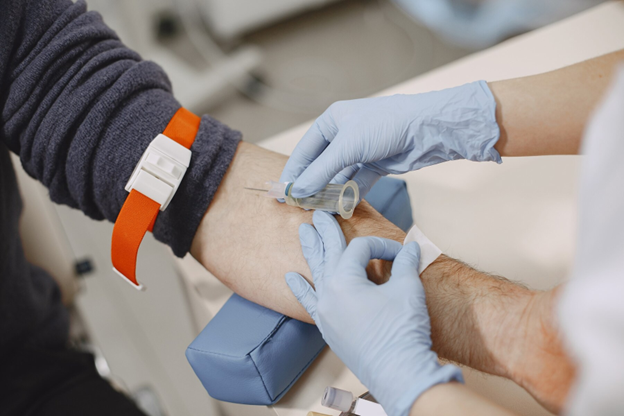In today’s world, staying aware of our health is more important than ever, especially with so many tools available. One crucial tool is the Complete Blood Picture (CBP). It plays a vital role in the diagnostic landscape of modern medicine. CBP helps people understand their health better, acting as a gateway to enhancing personal health awareness. Through this exploration, we will dive deeper into what this test is all about and why it holds such significance.
What is a Complete Blood Picture (CBP)?
The Complete Blood Picture or CBP is a detailed blood test that helps assess various health aspects. It’s like a snapshot of what’s happening inside your body. Doctors frequently recommend it because it provides a wealth of information that aids in diagnosing conditions early.
Why do physicians recommend it? Well, CBP assists in detecting illnesses that you might not even know exist. It helps you keep track of your overall health, especially if you’re dealing with chronic conditions. Whether it’s checking for anemia, infections, or even predicting certain types of cancers, CBP serves as a dependable tool. Knowing what’s going on inside your body can prepare you for timely interventions.
Demystifying the Complete Blood Picture Test
Wondering how the Complete Blood Picture test works? It’s simple! A nurse takes a small blood sample, typically from your arm. The process is quick and safe, with little to no discomfort.
The test involves: 1. Cleaning the test area with an antiseptic. 2. Tying a band around your arm to highlight the veins. 3. Drawing blood with a needle.
This straightforward procedure ensures patients experience minimal pain, making it easy and stress-free.
Decoding the Components of a Complete Blood Picture
The Complete Blood Picture Test checks different elements that highlight various health indicators:
- Red Blood Cells (RBCs): These carry oxygen to your body’s tissues. They give you energy and keep organs functioning efficiently.
- White Blood Cells (WBCs): These are the body’s defense army, fighting off infections and helping in immune response.
- Platelets: They assist in blood clotting, which is crucial for healing wounds.
- Hemoglobin: This protein in RBCs carries oxygen. Low levels may indicate anemia.
- Hematocrit: It shows the volume percentage of RBCs in the blood. Abnormal levels may signal dehydration or disorders.
Understanding these components in everyday terms can be empowering, helping people take charge of their health.
Understanding and Interpreting CBC Results
Interpreting the cbc complete blood picture results is fairly straightforward. Each test gives a range of normal values for different population groups, like children, adults, and seniors.
What happens if your results deviate from the normal blood picture? It could signify conditions such as: – Infections: An increase in WBCs may point to an infection. – Anemia: Low RBC, hemoglobin, or hematocrit levels might indicate anemia. – Blood disorders: Irregular platelet counts can suggest bleeding disorders.
Factors like age, gender, and even altitude can affect your CBP results. So, it’s crucial to interpret them correctly with your doctor’s help.
Routine Health Monitoring: The Benefits of CBC
The Complete Blood Picture plays a vital role in preventive healthcare. Here’s how:
- Early Detection: It can catch conditions like anemia or infections early, paving the way for effective treatment.
- Hereditary and Developmental Issues: Regular CBPs can flag genetic conditions or developmental abnormalities.
- Age-Specific Benefits: For children and the elderly, CBCs are essential for monitoring growth and overall health.
Routine Complete Blood Pictures are not just tests, but preventative measures, guiding timely healthcare decisions.
Specialized Uses of Complete Blood Picture
The Complete Blood Picture has broad clinical applications beyond regular check-ups:
- Cancer Monitoring: Regular CBPs assist in tracking cancer progression and treatment response.
- Autoimmune and Nutritional Disorders: Variations in full blood picture readings can reveal autoimmune issues or deficiencies in essential nutrients.
Advancements in CBC technology, like automated analyzers, have made these tests more accurate and accessible.
Patient Empowerment Through CBC Awareness
Being aware of the importance of a Complete Blood Picture empowers patients.
When should you request a CBC? Consider talking to your doctor if you feel unusually fatigued, have infections frequently, or suspect nutritional issues.
Preparation is minimal—eat normally and stay hydrated. Always discuss the results with your healthcare provider to get a comprehensive understanding of what your cbc complete blood picture reveals.
The Future of CBC in Personalized Medicine
What does the future hold for CBP? With technological advancements, the Complete Blood Picture Cost might decrease, making it more accessible.
We’re looking at a future where CBPs could form the backbone of personalized medicine. This means treatments could be tailored based on what your blood tells us about your body’s needs.
Conclusion: Embracing Complete Blood Pictures for Health Awareness
In summary, understanding and harnessing the power of the Complete Blood Picture is invaluable. Stay proactive about your well-being and embrace CBP as a tool for routine health checks. It not only safeguards your health but builds a foundation for a healthier future.


